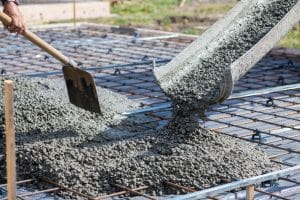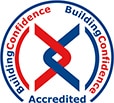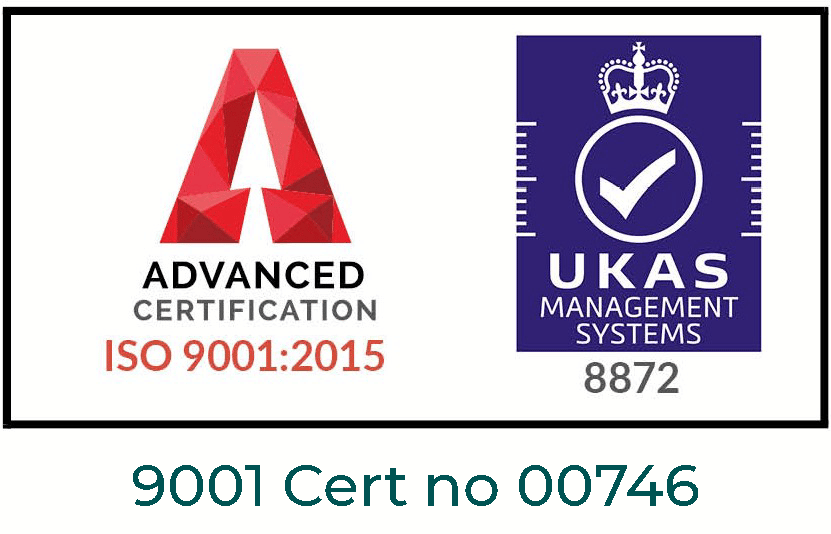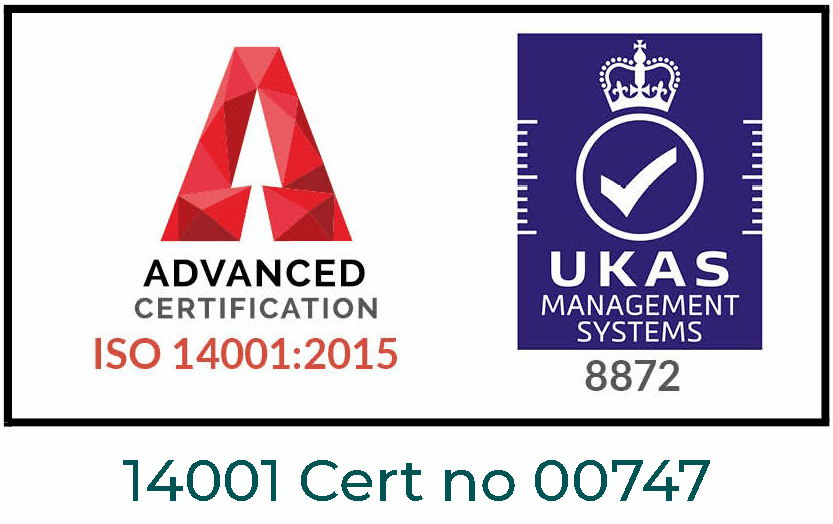Concrete recycling offers a practical way to reuse old concrete, turning it into valuable materials for new construction projects. It helps businesses keep budgets in check by lowering disposal fees and reducing the need for fresh aggregates. At the same time, it contributes to a cleaner environment by cutting down on landfill waste and lowering carbon emissions.
This practice has attracted interest from project managers and sustainability advocates. It can be an important factor in boosting resource efficiency and reducing the amount of rubbish heading to dumps. In this blog, we explore the core principles of concrete recycling and highlight the environmental gains and cost advantages that make it worth considering for construction and demolition jobs.
What is Concrete Recycling?
Concrete recycling is a method that collects and processes old concrete debris, which can come from building demolitions or leftover materials on construction sites. The aim is to break these unwanted pieces into smaller fragments and then transform them into fresh building resources. This approach cuts down on waste and takes pressure off landfill facilities, which often struggle with large volumes of discarded concrete.
Many building sites produce significant amounts of rubble. By recycling these materials, contractors put old chunks of concrete back into circulation, giving them a second life. This process stops usable material from becoming mere waste and helps conserve natural resources. Fresh rock and gravel often require extensive quarry work, leading to noise, dust, and habitat disruption. Recycled concrete, however, reduces such effects because it makes use of existing rubble instead of using up new raw materials.
By selecting recycled options, developers and local councils can integrate environmentally friendly measures into construction projects without making big compromises. These approaches mesh well with sustainable construction practices, in which builders work to lower their ecological impact. They also show a willingness to change old habits and adopt new methods that benefit both people and the planet.
The Concrete Recycling Process Explained
The recycling process starts by collecting old concrete. Then, specialist machines crush it into smaller pieces that can vary in size. Sorting follows, during which equipment removes metal fragments such as rebar. Any leftover contaminants, such as wood or plastic, are also taken out. After this stage, the material is usually graded by size. This sorted output, known as recycled aggregate, can be used for a range of applications.
Crushing and sorting are essential to produce a consistent product. Large blocks are reduced to manageable sizes, which are easier to handle and transport. Once processed, these recycled aggregates are ready to be included in new construction tasks, such as road bases and layers under foundations. In some cases, these materials are blended with other aggregates for specific uses. The final aim is to achieve quality that matches or at least comes close to virgin aggregates, but at a reduced cost and with far fewer demands on the environment.
Environmental Benefits of Concrete Recycling
Concrete recycling has the potential to lessen environmental harm while keeping projects efficient. Instead of allowing slabs, columns, and rubble to head straight to landfill, a recycling approach extends the life of these resources. This tactic helps avoid needless buildup in landfill sites, which often operate under strict capacity limits. As concrete accounts for a large portion of construction waste, any step that reduces its quantity in landfill can deliver real benefits.
An additional plus is that recycling concrete cuts the need for extracting fresh raw materials. Mining and crushing stone can involve major transportation and high energy use. When new quarries open, they can harm local wildlife habitats and scenic landscapes. By opting for recycled aggregates, builders cut these ecological effects. They also reduce energy use since less shipping of raw materials is required.
These changes link to broader sustainability goals. Lowering dependence on virgin resources suggests a shift in how the industry manages waste. Instead of discarding rubble, it can find a new use as aggregate for roads, driveways, and fresh building projects. This pattern shows that waste can become a key resource if handled properly.
Reducing Landfill Waste and Pollution
Old concrete can take up large amounts of space at landfill sites. In these locations, the material may remain for decades without serving any useful purpose. Landfill space is finite, so reusing concrete is a direct way to conserve it. As landfill facilities expand, pollution can rise. Toxins may seep into soil and water sources, creating problems for local communities.
By diverting concrete waste into recycling channels, builders minimise these pollution hazards. They transform a potential burden on landfill sites into a constructive asset. This helps limit issues connected with improper waste handling and fosters improved land use planning. Over time, this approach benefits both the local environment and the people who live nearby.
Lowering Carbon Footprint in Construction
Lowering emissions is a main priority for many modern building schemes. Producing fresh concrete is energy-intensive because it involves mining, transporting, and refining raw materials, plus heating them at high temperatures in a cement kiln. These activities contribute to greenhouse gas output. Recycled aggregates help reduce energy demands, since the original concrete material has already undergone part of the cycle. By lessening the volume of new raw materials required, recycling can cut overall energy usage. As a result, the carbon footprint of a project drops, helping contractors and developers move closer to their environmental aims.

Cost Benefits of Concrete Recycling
A key reason for recycling concrete is the cost-benefit. Traditional disposal involves high tipping fees, transport costs, and the burden of sourcing new materials to replace those thrown away. By recycling, companies reduce some of these costs. The recycled product can act as a partial or full substitute for new aggregates, which helps developers avoid paying for those fresh supplies. This is particularly relevant for large-scale demolitions that generate high volumes of waste.
Cost savings also arise from lowered transport needs. When a recycling facility is close to a project, the concrete can be crushed and reused without needing a long trip to a distant landfill or quarry. Over multiple projects, these small gains add up. Firms can reinvest the money saved into other areas, boosting overall productivity and job satisfaction among workers.
Recycling helps maintain a continuous flow of materials and keeps the pace steady. Frequent deliveries of new stone can delay a schedule if suppliers face shortages or busy periods. Recycled sources, on the other hand, can ensure a more predictable pipeline for fill and aggregate. This stability often leads to fewer disruptions and more precise deadlines.
Is Concrete Recycling Cheaper Than Landfill Disposal?
Landfill disposal costs often depend on weight and distance. Concrete is dense, so it quickly drives up tipping fees. Hauling heavy loads can mean significant fuel costs, especially if a landfill is located far from the demolition site. Recycling facilities may charge for processing, but the overall expense can be lower than constantly sending heavy debris to dumps.
Alongside direct cost comparisons, the reduced need for new raw materials can lead to further savings. In some areas, natural aggregates are more costly to source. By embracing recycling, local businesses and contractors can minimise these expenses. In the long term, recycling can be cheaper, particularly if the project’s scale is large enough to benefit from bulk cost reductions.
Advantages of Using Recycled Concrete in Construction
Using recycled concrete provides immediate and long-term advantages. For one, it reduces the amount of raw stone required. This approach frees up budget allocations for other materials or labour. With cost savings, project managers can invest in higher-grade equipment or safer tools, improving working conditions on site.
Transport savings can also be considerable. Large loads of fresh aggregates can rack up diesel costs, and repeated journeys raise pollution levels. By relying on recycled products, contractors reduce the number of journeys needed. This can make it easier to stay within local emissions limits and meet any green standards set by planning authorities.
Recycled aggregates are often suitable for foundations, retaining walls, or sub-base layers in roads. These uses keep them out of landfill and reduce the need for new materials. Over time, more building firms recognise the reliability of recycled concrete, and this has driven up demand. The extra demand can create a competitive market, which can lead to improvements in recycling techniques and reduced costs for buyers.
Practical Applications of Recycled Concrete Materials
Recycled concrete materials have many uses in modern building projects. They are frequently used for road bases, where they form the ground layer for pavements, motorways, or driveways. They can also appear in the foundations of new housing estates and public buildings. By offering sturdy support, recycled concrete reduces the requirement for freshly quarried rock.
In addition, it can be blended with fresh concrete mixes for certain projects. This option, called partial substitution, allows builders to use a portion of recycled aggregate alongside standard aggregates. This reduces the volume of virgin materials needed, making each construction phase less resource-intensive.
Some developers take advantage of crushed concrete for drainage solutions and landscaping tasks. When placed under the topsoil, it can improve water flow in gardens or recreational spaces. This helps control standing water and promotes healthy plant growth. Another plus is that recycled concrete can have a rough texture, which offers good traction for pathways or temporary roads.
Beyond these uses, recycled aggregates show promise in creative designs. Some architects choose them for decorative features or external seating, highlighting the concept of reusing materials. This approach shows that reclaimed concrete is not limited to heavy-duty uses. It can also add a stylish or modern element to new builds.
Conclusion: The Future of Sustainable Concrete Recycling
Concrete recycling is gaining momentum as the construction sector looks for ways to reduce rubbish and preserve resources. This process combines straightforward methods, such as crushing and sorting, with a shift in mindset about how we manage waste. By recycling old concrete, demolition and building teams help lower landfill use, cut emissions, and reduce the strain on natural reserves.
Many firms see real cost benefits in reduced disposal fees and cheaper aggregates. At the same time, clients and local authorities appreciate the positive environmental impact of recycled materials. As more projects embrace these solutions, recycling facilities may become more common, bringing added convenience for demolition sites. Through these steps, the industry moves closer to a future where reclaiming materials is standard, not an afterthought.
With clear planning, effective collaboration, and ongoing improvements in recycling technology, concrete can be repurposed long after its first project ends. This approach saves money, protects the environment, and showcases a practical method of managing construction waste. It reflects a balanced way of building, where profitable outcomes go hand in hand with a keen awareness of environmental stewardship.










